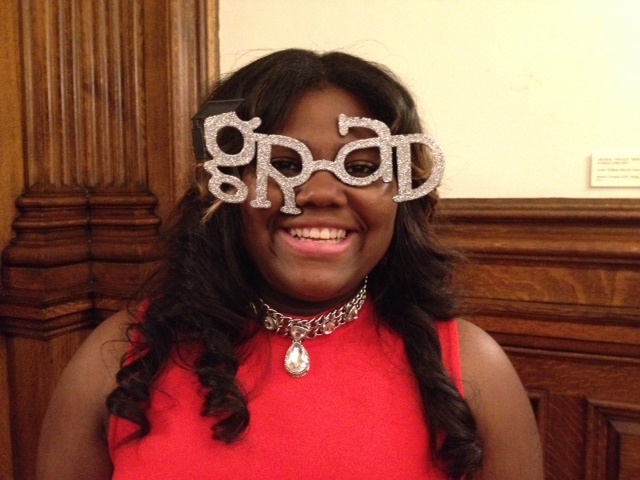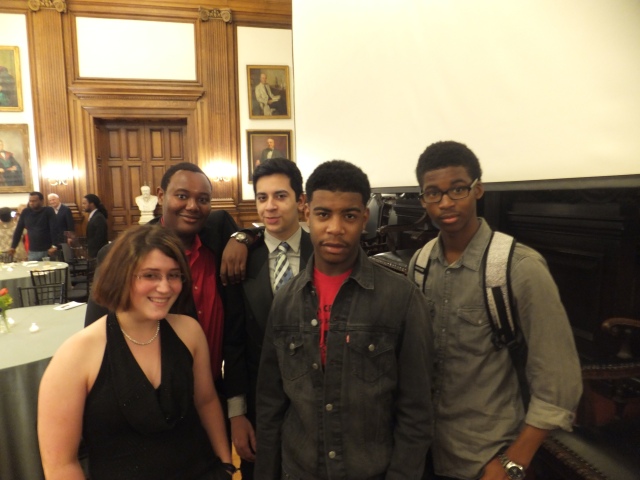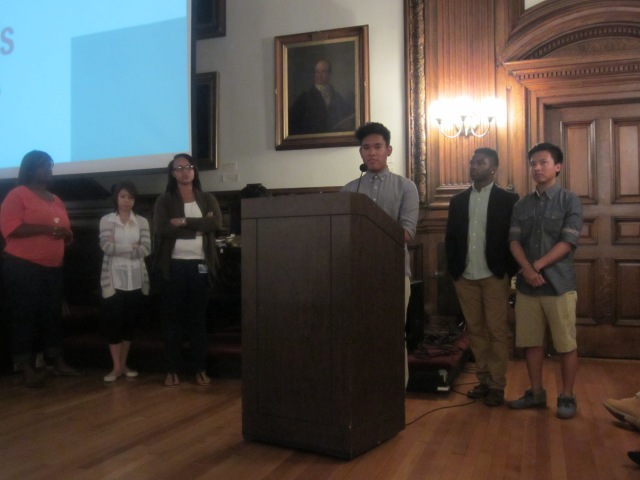Hello, my name is Qariq Armstrong and I am a Karabots Junior Fellow at The College of Physicians of Philadelphia. I am working at the Mütter Museum, participating in a two week summer internship from July 7th to July 18th. During this internship I was working with Beth Lander, College Librarian, to create a research subject that I was interested in. After I chose the subject, I was told to find research using the Museum’s card catalogue and the electronic catalogue on the internet. Then after I felt I found all my research I had to create a thesis statement for my research paper.
“What interests you?” was probably one of the most difficult questions I had been asked all summer. That specific question was so difficult to answer at the time but Ms. Beth, the librarian, made it easier to think about because she was constantly throwing interesting ideas at me and I ultimately came up with an answer.
I chose to talk about drugs and their different classes. It took me a while to get in the swing of things and get engaged in my new research topic. I eventually figured out what I wanted to say and after that, the process of researching became much smoother.
The word “drugs” has multiple meanings. There are drugs that are illegal and there are drugs that help people get over a cold or the flu. However, I am not going to talk about legal vs. illegal in this paper. Instead, I am going to discuss different classes of drugs including Stimulants, Opiates, Hallucinogens, and Depressants. I will look at what makes these different classes so different, and how each class of drugs affects a person.
http://animoto.com/play/t86egVvtRGJrVqbU9lYD6w
First there are stimulants. Stimulants are a class of drugs that increase the activity in the brain. The drug enhances the effects of the chemicals dopamine and norepinephrine. There are legal stimulants and there are illegal stimulants. People use stimulants every day; for example, nicotine. Nicotine is a legal stimulant found in products like tobacco and even in plants like tomatoes and green peppers (in small quantities). There are other legal stimulants that are also used every day like caffeine. Caffeine is usually found in soda and coffee and even chocolate. There are also illegal forms of stimulants available like cocaine. The interesting thing about cocaine is that it was not always illegal. In 1903, the very popular soda company, Coca-Cola, mixed the stimulant cocaine in with the recipe for Coke. Cocaine served the same purpose as caffeine does in sodas today.
There are Stimulants given as prescriptions. These are the legal forms of the drug class. These are legal when prescribed to the correct person, and when they are being used correctly and not abused.
People abuse certain forms of stimulants for a plethora of reasons, some being because they want to have euphoric affects, or to prevent the feelings of tiredness and fatigue. Some people just abuse drugs because they have no choice. Their bodies become so dependent on the effects of the drug that they need drugs to get through the day. Taking illegal stimulants can lead to symptoms such as: racing pulse, high blood pressure, dry mouth, head ache, bloody nose, loss of appetite, and much more.
Stimulants, though, aren’t always bad. Stimulants can also have some good effects on a person and can be used to help people who are in need. For example, people are prescribed stimulants to help with symptoms of narcolepsy. Stimulants induce insomnia for tasks of long duration. They can even treat mild depression.
Another class of drug is called hallucinogens. Hallucinogens sound like the word “hallucination” because that is one of the drug’s main effects. Hallucinogens “fix on the sensory distortion and enhancement, especially visual, that is one of the most striking effects of some of the drugs at low doses, in the early stages of intoxication, or during the first few drug experiences,” (Grinspoon 6). The most common hallucinogen is called Lysergic Acid Diethylamide aka LSD. LSD is “one of the most potent mood changing chemicals. It is manufactured from lysergic acid and when sold on the street has cartoons on the squared shaped drug,” (Brittany LSD). Some people use this drug just because they think that they are going to have an exciting “brain party,” but what they don’t know when taking this drug is that it can cause some serious damage to the body. Some effects of taking this drug could be permanent damage to the way your brain functions, increase in breathing rate, difficulty remembering things, pupil dilation, vomiting, sweating, dry mouth and hallucinations. People also use the drug to find their inner self. There are other forms of hallucinogens outside of LSD. There is PCP (Phencyclidine), Peyote (similar to LSD) and Psilocybin (produces muscle relaxation and/ or weakness). All of these drugs share similar effects with one another – some are said to just be better.
The third class of drugs that I will discuss is depressants. Depressants, like many other classes, have many different forms. There are some legal and some illegal types of depressants. For example, alcohol is a legal form of a depressant. Marijuana is somewhat legal because it is only legal in 23 US states. Then there are illegal depressants like GHB (Gamma Hydroxybutyric Acid) which is also known as the “date rape” drug and is used to drug victims before sexual assault. There is also a type of depressant called “inhalants.” Inhalants include glue, paint thinner, and hair spray and they all have the same effects as alcohol. Depressants can cause fatigue, fever, sluggishness, addiction, impaired vision among many others. There are many reasons why people abuse depressants. Some people experiment with the drug because they may think it will help them lose weight, or that it will help them have more fun, or maybe even help them fit in. These drugs are not meant to be abused. Some people also just take them to get high and get away from their problems.
The last class of drugs that I will discuss is opiates. An opiate is a type of drug that, “directly depresses the central nervous system,” according to the Institute for Substance Abuse Treatment Evaluation. The article goes on to say that “Some effects of opiates may include drowsiness, body aches, nausea, vomiting, dry mouth, and clouded mental function.” People use opiates to relieve pain, to receive euphoric effects, to feel relaxed, and many more. They are many different types of opiates. The most common forms being Codeine, aka “Syrup”, Heroin, Morphine, Opium, and Oxycontin.
I used this research opportunity to learn about 4 major classes of drugs. All of them can be used legally and illegally and the same reactions that can treat depression or treat a disease can also lead to abuse. Thank you for reading and goodbye!




